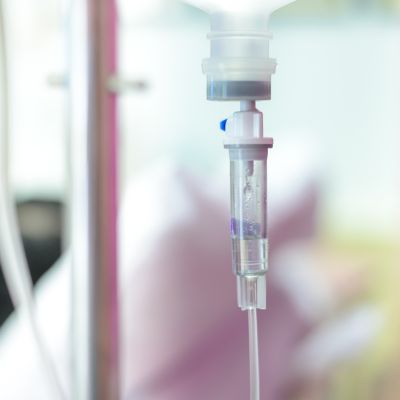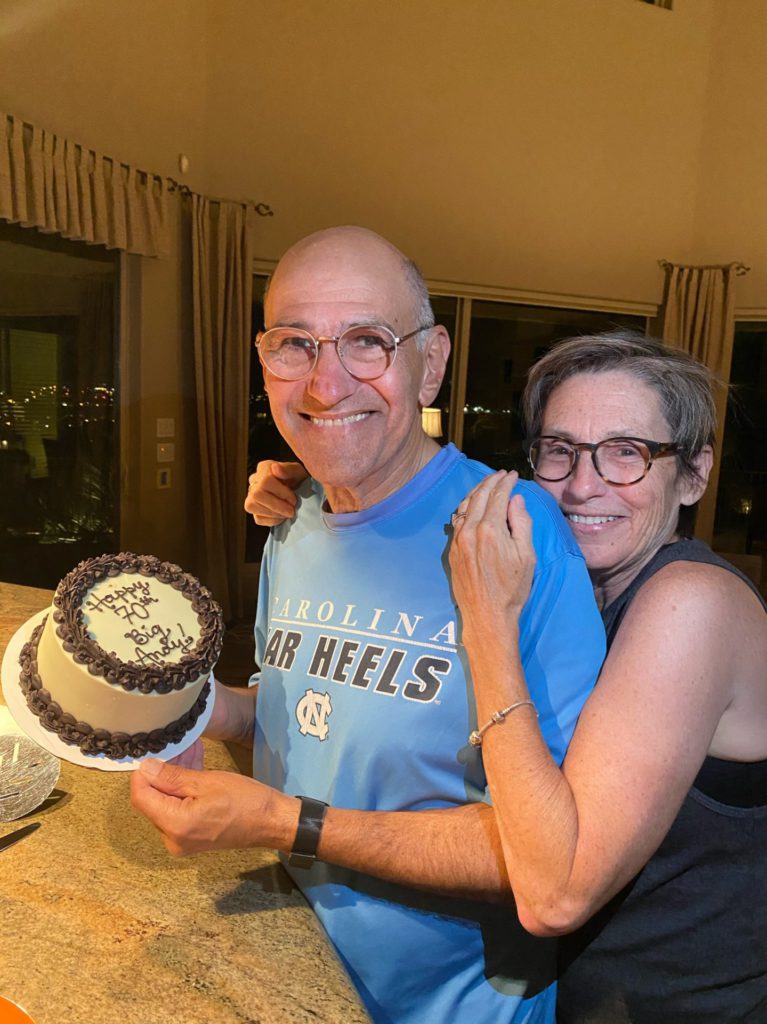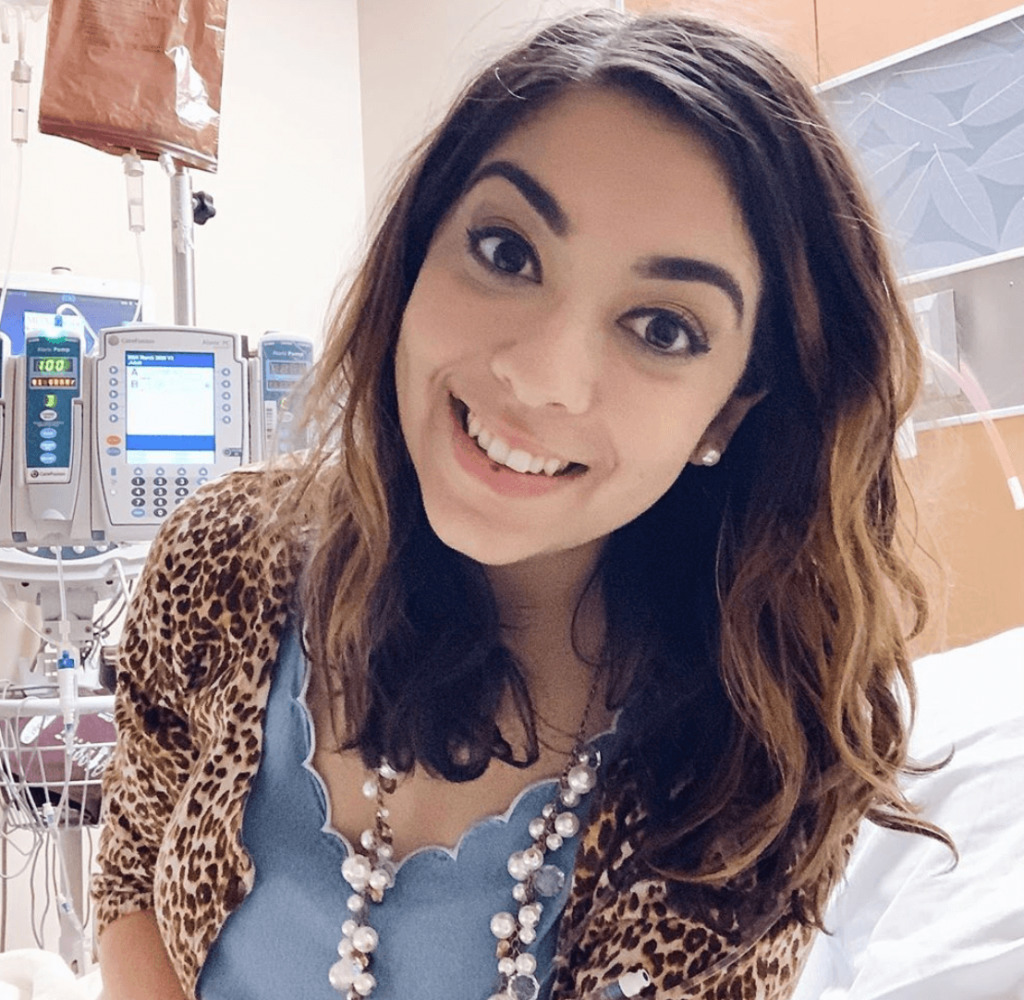RITUXAN® (rituximab) Side Effects – Described by Real Patients
Before starting any new treatment, many patients ask similar questions about side effects, effectiveness, and risks. In this article, real cancer patients describe their experiences and side effects of rituximab to help give you a deeper understanding of the targeted therapy.
In 2016, Rituximab made a significant breakthrough as the first therapeutic antibody approved for cancer patients in the U.S. This targeted cancer therapy quickly gained recognition for its ability to improve outcomes in B-cell malignancies, providing renewed hope for those affected.
It has brought new possibilities for patients with non-Hodgkin lymphomas (NHL) like diffuse large B-cell lymphoma and follicular lymphoma. Moreover, Rituximab has been used for patients with chronic lymphocytic leukemia (CLL) and other acute blood conditions.
At The Patient Story, we understand the challenges you may be facing, and we’re here to offer guidance and empathy every step of the way.

This interview has been edited for clarity and length. This is not medical advice. Please consult with your healthcare provider to make informed treatment decisions.
The views and opinions expressed in this interview do not necessarily reflect those of The Patient Story.
What is monoclonal antibody therapy?
A monoclonal antibody is a drug or substance that targets a specific antigen, a substance that triggers the body’s immune system, often making you sick. In monoclonal antibody therapy, a specific antibody is used against a specific antigen.
Think of an antigen as an “invader” while an antibody is your immune system’s hero, defending your health.

“What happened is that I got this combination therapy known as FCR (fludarabine-cyclophosphamide), 2 chemo drugs, and a targeted monoclonal antibody, rituximab. I was like patient number 70 and I got that combination 10 years before it was approved as a combination by the FDA.
Now, would I have been alive had I just had chemo and not had this Rituxan added and been in this trial? I don’t know. For me, it provided a real advantage and a head start on state-of-the art treatment. I’m very grateful for that. I think it saved my life”
Andrew Schorr. | See Andrew’s Chronic Lymphocytic Leukemia (CLL) & Myelofibrosis Stories
Rituximab (RITUXAN) is an anti-CD20 monoclonal antibody. In non-Hodgkin B cell lymphomas and also in CLL, the unwelcome antigen CD20 is produced by a protein. Rituximab targets the CD20 protein – which lives on the surface of both cancerous and healthy blood cells – and it actively interferes with CD20’s dangerous cellular activity. It works by attaching itself to the protein, then helping your own immune system destroy the malignant cells. It may also destroy the cancer cells in a more direct way.
How and when is rituximab used?
Rituximab is used both alone and in combination with chemotherapy for:
- Adults with non-Hodgkin lymphoma
- Children age 6 months or older with mature B-cell non-Hodgkin lymphoma and mature B-cell acute leukemia (B-AL)
- Adults with chronic lymphocytic leukemia
Depending on how aggressive the cancer appears to be, adult NHL patients may receive rituximab on its own or in combination with chemotherapy drugs. And this may change during the course of the disease or if it returns after a period of remission, when no cancer is detectable.
In children with NHL and adults with CLL, combination therapy is today’s standard treatment practice.
A specialist’s perspective
Kerry Rogers, MD, a hematologist and associate professor who specializes in CLL at The James Cancer Center at Ohio State University, explains that there are many factors associated with whether rituximab is given alone or in combination with chemotherapy.

“Chemo Immune therapy (when chemotherapy drugs are combined with an antibody therapy) has had a survival benefit compared to chemo alone . . . when rituximab was added to a chemo drug regimen,” explains Dr. Rogers. She adds, however, that there are many considerations that may come into play in this decision.
- If the cancer is less aggressive it may be possible to start with rituximab alone, which can result in long-lasting remission.
- When CLL or B-cell lymphoma returns or is more aggressive at diagnosis, chemotherapy may be added in combination with rituximab to achieve the best result.
- Quality of life is a factor. Age and other health conditions may sway a specialist to be less aggressive with chemotherapy drugs that might not be well-tolerated.
- Rituximab may be used as a long-term maintenance therapy in some patients, to prevent a relapse of the disease.
What to expect when taking rituximab
Whether you take rituximab alone or in combination with chemotherapy drugs, there are side effects that can be expected. Keep your care team aware of your side effects so they can help manage them, particularly if they get in the way of activities of daily living and/or they don’t go away over time.
Most common patient side effects
Infusion-related reactions – Most are not serious, but life-threatening reactions can occur either during the infusion or within 24 hours. Your healthcare provider should give you medications to decrease the risk of serious reactions, as well as anti-sickness medicines called antiemetics. These help with side effects which, while they can make you feel very ill, are not usually medically dangerous when controlled.
Typical reactions include: fever, chills, nausea and vomiting, headaches, muscle aches, tiredness/fatigue and dizziness. Some of these symptoms may appear within a few hours of infusion.

“It can trigger something called the rigors in you, which affects basically your whole body. It’s like you have a really bad fever and the chills that you get with a really bad fever. You’re just balled up and shaking. They clocked that right away, buried me in warm blankets and gave me something to counteract that. My husband tells me it was only like a minute or so that I was going through the rigors. It felt like half an hour to me.”
Stephanie | Stephanie’s Stage 4 MCL Non-Hodgkin’s Lymphoma Story
Symptoms to tell your doctor right away include: swelling of lips, tongue, throat or face; hives or rash; sudden cough; shortness of breath or difficulty breathing; dizziness or weakness; heart racing or fluttering (palpitations); and chest pain.
Skin and mouth sores – At any time during treatment you may develop painful sores or blisters on your skin or in your mouth. Peeling or itching skin and pustules (pimples) are also common and may be treatable.

“I broke out in a pretty serious rash that lasted for about 2 days, and then it went away and never came back after the other treatments.”
Bobby | See Bobby’s Stage 4 MCL Non-Hodgkin’s Lymphoma Story
Bruising and bleeding – This can include nosebleeds or bleeding gums, as well as tiny red spots on your skin called petechiae. These are side effects most often related to lowered platelets, which help the blood clot.
Hair loss (alopecia) – The loss of body hair is common, including eyelashes and eyebrows.
Other common side effects – Lowering numbers of red and white blood cells, diarrhea, muscle spasms, swelling and depression are not uncommon.

“I had really bad bone pain during the winter. My doctor said it was probably a result of rituximab. It caused bone pain and muscle weakness. I would be walking, and then all of a sudden I would be on the ground.”
Ciara T. | Explore Ciara’s Acute Lymphoblastic Leukemia Story

“I went to work every day except for the all-day chemo. For R-CHOP, I was there for close to 8 hours each time. Then I’d go home and take a nap. That Benadryl just made me sleepy.
I really didn’t have any other effects. On the weekends, I went biking with my bike club. I didn’t know any different, so I just did what I felt like I could do.”
Shari | Shari’s Stage 4 MCL Non-Hodgkin’s Lymphoma Story
Complications
Infections – Rituximab can increase your risk of getting bacterial, fungal and viral infections. It can also reduce the body’s ability to fight infections. So it is important to immediately treat any signs of infection, including fever, chills, redness or soreness around a cut, earache, toothache, painful urination or flu symptoms.
Hepatitis B virus reactivation – People who have had hepatitis B or are a carrier of the virus could experience a reactivation of the condition when they take rituximab. This can cause serious and even fatal liver problems. It should be monitored before, during and for several months after rituximab therapy. Tell your healthcare provider right away if you notice increasing tiredness or a yellowing of your skin or eyes.
Kidney problems – Particularly in NHL patients, rituximab can cause severe kidney damage or malfunction. Blood tests that measure kidney function will be regularly done, including before starting treatment.
Heart problems – Because rituximab can cause chest pain, irregular heartbeats and heart attack, your healthcare provider may monitor your heart throughout treatment.
Bowel problems – More common when rituximab is taken in combination with chemotherapy, bowel problems can occur, including dangerous blockages or tears that need immediate medical attention.

“The Rituxan infusions caused some GI problems. My body just doesn’t like it. My first infusion, I got the same allergic reaction to it. We had to scale back and ramp up the infusion rate slowly. After that slow time, the next cycles were fine other than the GI issues.”
Lacey B. | See Lacey’s Chronic Lymphocytic Leukemia Story
Tumor Lysis Syndrome (TLS) – TLS is caused by the fast breakdown of cancer cells. It can cause kidney failure, abnormal heart rhythm, and other symptoms from 12 to 24 hours after rituximab infusion. Because the condition can be serious, your provider should do blood tests to check for TLS, and they may give you medication to prevent it.
Progressive Multifocal Leukoencephalopathy (PML) – PML is a rare, life-threatening brain infection caused by a virus, including in people with weakened immune systems. Symptoms include: confusion, dizziness or loss of balance, difficulty walking or talking, decreased strength or weakness on one side of your body, blurred or loss of vision.
Before starting rituximab
Make a list of these important things to tell your care team before you begin rituximab.
- History of heart problems, irregular heartbeat, or chest pain
- Lung or kidney problems
- Recent or current infections, including hepatitis B, hepatitis C, herpes simplex virus, parvovirus B19, varicella zoster virus (chickenpox or shingles), west nile virus or cytomegalovirus
- Recent or upcoming vaccinations some of which cannot be taken while in treatment with rituximab
- You are pregnant, nursing, or could become pregnant
- All current medications including over-the-counter vitamins and supplements
- Other medical conditions
More Rituximab Patient Stories
Tim H., Mantle Cell Lymphoma (MCL), Stage 3/2
Symptoms: Lump on left-side of neck that grew bigger over a couple years, new lump on right side
Treatments: 6 cycles Nordic chemo protocol, alternating cycles of R-CHOP and rituximab + high-dose cytarabine, autologous stem cell transplant
...
Sheryl B., Mantle Cell Lymphoma (MCL), Stage 4
Symptoms: (Over 15 years) Skin irritation from temperature changes, rising WBC levels, unexplained fatigue, retinal hemorrhage, hardened abdomen (from enlarged spleen)
Treatment: 6 cycles Hyper-CVAD chemotherapy
...
Sheree N., Waldenstrom Macroglobulinemia
Symptom: Feeling anemic
Treatment: Chemotherapy (bendamustine & rituximab)
...
Shari B., Mantle Cell Lymphoma (MCL), Stage 4
Symptom: None; lymphoma discovered at unrelated doctor appointment
Treatments: 6 cycles R-CHOP, 5 cycles phase 3 trial of Velcade + Rituxan (normally for multiple myeloma), allogeneic bone marrow transplant (BMT)
...
Renata R., B-Cell Acute Lymphoblastic Leukemia, Philadelphia chromosome-positive (Ph+ALL)
Symptoms: Fatigue, shortness of breath, nausea, fevers, night sweats
Treatments: Immunotherapy, chemotherapy, TKI, stem cell transplant (tentative)
...
Pete D., Waldenstrom Macroglobulinemia
Symptom: Irregular blood test results during a regular workup for Crohn’s
Treatments: Chemotherapy, surgery, radiation, monthly IVIG
...
Lacey B., Chronic Lymphocytic Leukemia
Symptoms: Extreme fatigue, elevated WBCs
Treatments: Chemotherapy (FCR), venetoclax + rituximab
...
Kim S., Follicular Lymphoma, Stage 4
Symptom: Stomach pain
Treatments: Chemotherapy (rituximab & bendamustine), immunotherapy (rituximab for 2 additional years)
...
Kayla T., Hodgkin's Lymphoma, Stage 3A
Cancer details: Possibly misdiagnosed the first time; later diagnosed as grey zone lymphoma
Symptoms: Pulled muscle in chest
Treatments: ABVD chemo, radiation, high-dose chemo, stem cell transplant
...









One reply on “RITUXAN (rituximab) Side Effects | The Patient Story”
First Rituximab infusion had to be stopped because of violent rigors. Second infusion caused suffocation
Bentamustine added. Next scheduled infusion cancelled because of low platelets. Third infusion one month later given slower. No adverse effects. One month later, CT scan normal blood counts normal. Appetite normal and gaining weight. 3 month checkup on 5/4/24